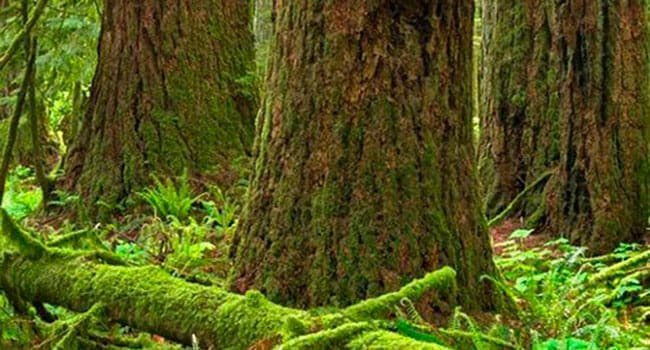Debate on old-growth forests must be based on facts, not just conjuring up feelings of nostalgia, awe and respect
By Mike Larock
and Megan Hanacek
Association of BC Forest Professionals
Forest professionals believe that British Columbia’s old forests are important. Old forests are ecological reservoirs of genetic variation, a record of ecological history, habitat for specialized species or predators, recreation inspirations and complex buffers to change.
That’s why when it comes to managing B.C. forests and implementing government forest policies, forest professionals rely on the best available data to design management strategies that meet government objectives, like the retention of old growth. These management efforts are adaptable, allowing past assumptions to be re-examined in light of change, like the devastation of pine forests from mountain pine beetle or a fire storm that consumes 10,000 hectares.
The state of old-growth forests on Vancouver Island resurfaced in the news recently with the announcement that a pair of environmental activist groups plan to reprise a tour of Vancouver Island communities to talk about preserving the island’s old-growth forests.
The difficulty with any conversation about old-growth forests begins with the definition. As anyone who attended the same environmental groups’ meetings in March quickly discovered, definitions of what constitutes old growth were mushy and malleable, depending on who was speaking. This lack of a clear definition of what constitutes old growth leads to incorrect numbers and assumptions about the amount of old-growth forests on Vancouver Island that are just plain wrong. As the late U.S. senator Daniel Patrick Moynihan famously said, “Everyone is entitled to his own opinion, but not his own facts.”
The phrase old growth is an emotional expression, conjuring up feelings of nostalgia, awe and respect. At the same time, old growth means different things to different people. For some, old growth means old trees. But how old? For others, old growth represents big trees, so big you can’t wrap your arms around them. Consequently, when many people use the term old growth, they’re not using it in a science-based context despite that being the context in which government makes policies that govern management and preservation of old-growth forests.
From a forestry science perspective, old-growth forests are seen as having very old (250 to 1,500 years), very large trees; a diverse structure (combination of dead standing, old, new and young individual trees); an understory microclimate with vegetation (in clusters or in gaps); and a dominant canopy layer of climax species or combination of species and ground debris that exhibits the silhouette of past fallen giants partially decomposed and absorbed into the forest floor being replaced by other mature growing trees. Additionally, the characteristics of old-growth forests don’t show up all at once – the occurrence of the characteristics is gradual. And there are old-growth characteristics in some younger forests.
Vancouver Island, which is 3.28 million hectares in size, has 2.4 million hectares of Crown land. Using the above definition of old growth, and digging into data from the B.C. Ministry of Forests, Lands, Natural Resource Operations and Rural Development, we find that 860,000 hectares of that Crown land (46 percent) is old-growth forest and of that, about 520,000 hectares (62 percent) is estimated to be protected.
Old-growth areas are included in protected areas like parks. Biodiversity targets for landscape units have been set so that old growth exists in all regions. Specific Old Growth Management Areas (OGMAs) have been established. And reserves for fish and wildlife habitat, ungulate winter ranges and other natural uses have been established.
No one in B.C. wants to see the harvesting of all old growth. And with 520,000 hectares of old-growth forest protected, it’s clear that’s not happening nor is it going to happen.
So while there’s no question that our old-growth forests can elicit strong emotional feelings in many of us, when it comes to discussing old-growth forests and how they’re managed, it’s best if we stick to the facts.
Mike Larock, RPF, is director of professional practice and stewardship with the Association of BC Forest Professionals. Megan Hanacek, RPF, RPBio, is a forest stewardship specialist with the Association of BC Forest Professionals.
The opinions expressed by our columnists and contributors are theirs alone and do not inherently or expressly reflect the views of our publication.
© Troy Media
Troy Media is an editorial content provider to media outlets and its own hosted community news outlets across Canada.





